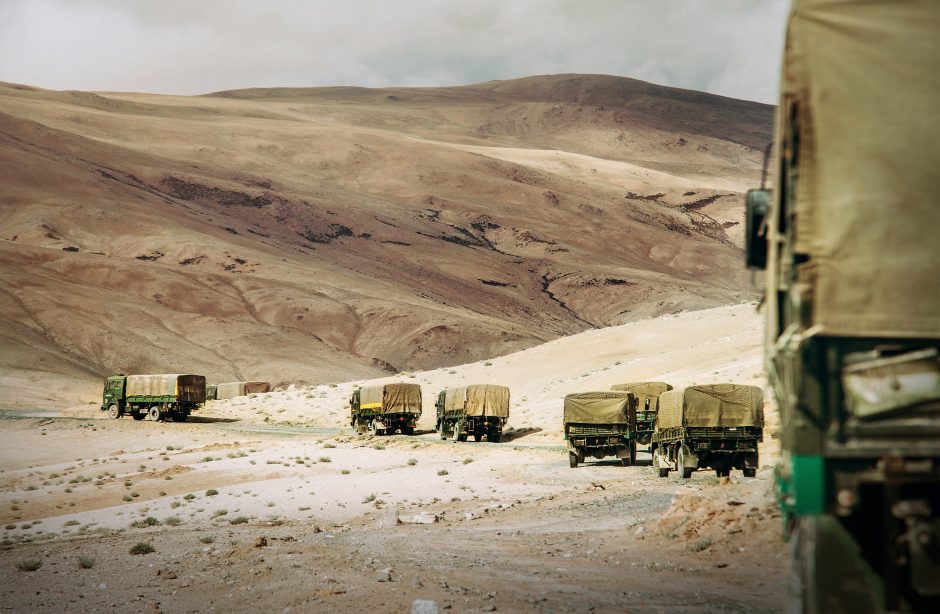Emergency care in Afghanistan

Since 2001, over 3,500 soldiers from the Western coalition have been killed in Afghanistan, while on the US-led Operation Enduring Freedom (OEF). Many fatalities have been the result of hostile action and here, Troy Robson, a former Sergeant in the Royal Marines, recounts an incident whilst on tour and the benefits of carrying the latest procedures in haemostatic technology.
Prior to operational deployments, it is mandatory for all Royal Marines to take part in mission specific training in preparation for the task ahead. Approximately nine months before flying out to Afghanistan, Troy was required to participate in such training, and it was there that he was taught some new techniques and revised emergency first aid, with specific emphasis in the management of catastrophic bleeds.
“Given the nature of the job, you can expect that at some point, in the field, you may find yourself having to bandage yourself or help an injured colleague. We knew that Celox was good gear but for a lot of the lads this was anecdotal. Using it in a real-life situation, however, makes you realise just how good it is” Troy stated.
Whilst on tour, members of his team were caught in a firefight. He recalls taking cover from very heavy and very accurate Taliban fire. The team were pinned down and took refuge in a narrow alleyway in order to return fire. This is when it became apparent that the situation was becoming more complicated.
“As I checked the men and looked to my officer for guidance, I could see that his upper right arm had a sizeable dark wet patch, which at the time I could only assume was caused by a 7.62mm round. I’d seen several injuries like this in the past and knew that some wounds can act in an unexpected way. I had learned that some do not bleed profusely, immediately, but it can take a few seconds before any blood emerges and so the actions that you take in between that time, is crucial.”
He explained that he knew that any second the wound may begin gushing with blood, but the wound area was collecting dust and grit caused by the ensuing battle.
Fast action is important, and in order to accurately locate the source of bleeding, he had no choice but to rip open the sleeve and try cleaning around the wound using a field bandage and a little amount of water he had available.
As Troy stated, “once I could see the full extent of the wound, it was clear that a standard bandage would not be enough to control the blood that was now flowing freely from my officer’s arm.”
In his personal medical kit, Troy had a variety of items available to help control any heavy bleeding. However, there was one piece of kit that he knew would be able to help stem the bleeding until the patrol medic, who had been separated during the action, could get to his location.
Celox range of gauzes are designed to treat life-threatening emergency bleeding1 and in training, Troy was told that the gauzes were effective for a range of injuries including gunshot wounds and amputations. Crucially, Celox Rapid gauze is able to reduce compression time to one-minute compression, or until bleeding stops2.
“Given the situation, Celox seemed like the best choice and after compacting the gauze onto my officer’s arm, I can assure you that it was. Celox gauze was easy to apply and didn’t require any extra assistance in doing so, not that I had an option,” explained Troy.
Considering the conditions and that he’d already cleaned the wound, Troy considered that packing the wound with a Celox gauze was the most appropriate course of action. Especially as he claimed, given the location of the injury, which meant that they could hold the gauze in place with a field dressing.
“We knew that it would stay in place during movement with no re-bleeding. I had learned that Celox gauze works by sticking to wet tissue in the wound, in order to form an adhesive gel that can seal the wound and stop the flow of blood,” said Troy.
Eventually, the patrol was extracted, and the officer was able to receive professional medical assistance. “In my opinion, the job of the medical support team, including the surgeons back at Camp Bastion, was made easier by the earlier application of the Celox gauze.” Troy received an update, on the officer’s progress, a couple of days later. The officer’s arm did not require amputation and due to a little nerve damage underwent some physiotherapy. He made a great recovery.
Troy has used Celox gauze for a number of other injuries whilst on operations. “Having the product in my kit gave me confidence in being able to handle most life-threatening bleeds that could have arisen.”
References:
- CE cleared indication for use. Supporting information available upon request.
- Hoggarth A et al. (2011). Testing a new gauze hemostat with reduced treatment time. Poster at ATACCC, Ft Lauderdale, August 2011.


